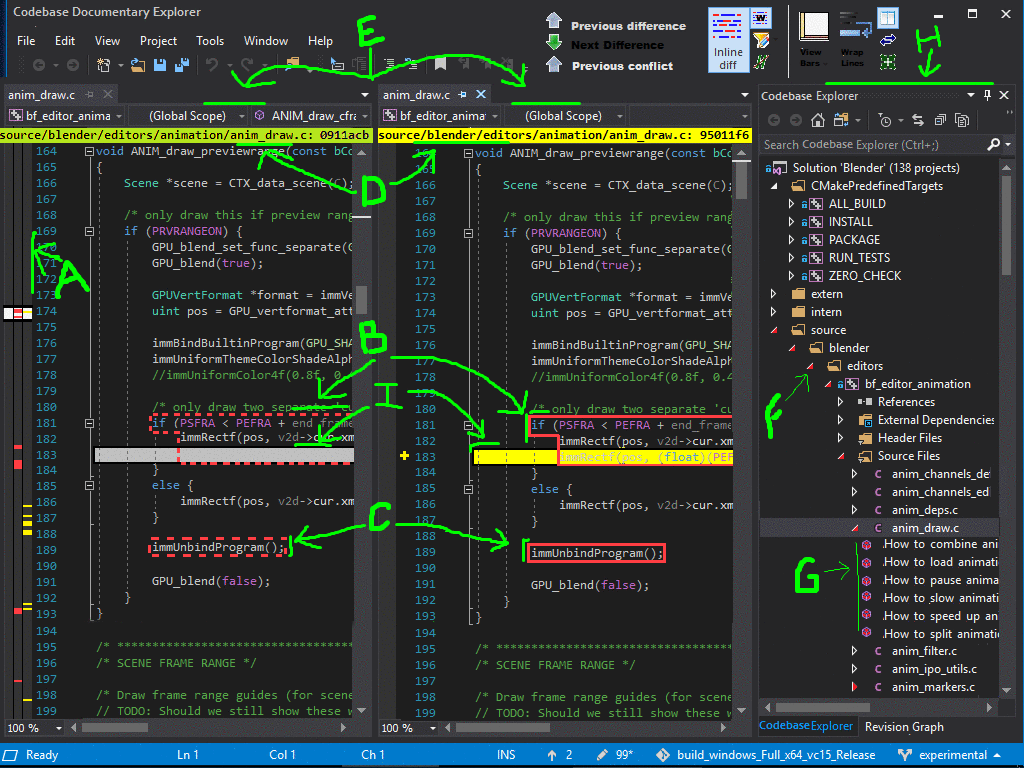Preliminary concepts for the design of a codebase commentary manager and explorer
Abridged diagram version

Commentary Editor
A) This is like the locator bar in TortoiseGitMerge. The yellow reflects added code and the red reflects locations of comments.
B) The right side is an expandable comment, and the left is only a sympathetic expandable comment: the left file version does not have any actual comments linked with it. The comments are mapped to their counterpart code in codebase files and hopefully even synced with the code’s git repository and should, somehow, signify when the counterpart code has changed. Also, there can be two types of comments within the Commentary Editor: adjacent and nonadjacent(i.e. group comments). Note that formatted text, hyperlinks, images, etc can be put in the comment window. Also note that the yellow highlighted line of code is the newly added code for that commit version - I probably shouldn’t have included that - inside - the comment though because it’s confusing.
C) The right side is a collapsed comment, and the left is only a sympathetic collapsed comment.
D) These two things are file locations with differing commit hashes.
E) These two windows represent one of two modes: single window, and side by side comparison window. They function like a combination of Visual Studio’s text editor and TortoiseGitMerge side by side editor.
Codebase Explorer
F) These widgets function like they would in Visual Studio but with the added bonus of guiding students to commented code.
G) These are not functions (like you might expect). They are instances of named comments, and they are like hyperlinks to locations of the comments within the files.
H) This window is the Codebase Explorer and one of it’s purposes is to show a hierarchical tree view of a codebase.
I) These are highlighted new additions of code like what you’d find in TortoiseGitMerge .
TODO:
Overview Commentary Editor
Revision Graph Editor
?
=============================================
Unabridged text version
NOTE: Open this file with OpenOffice Apache.
CodeTutorialExplorer.xml (22.2 KB)